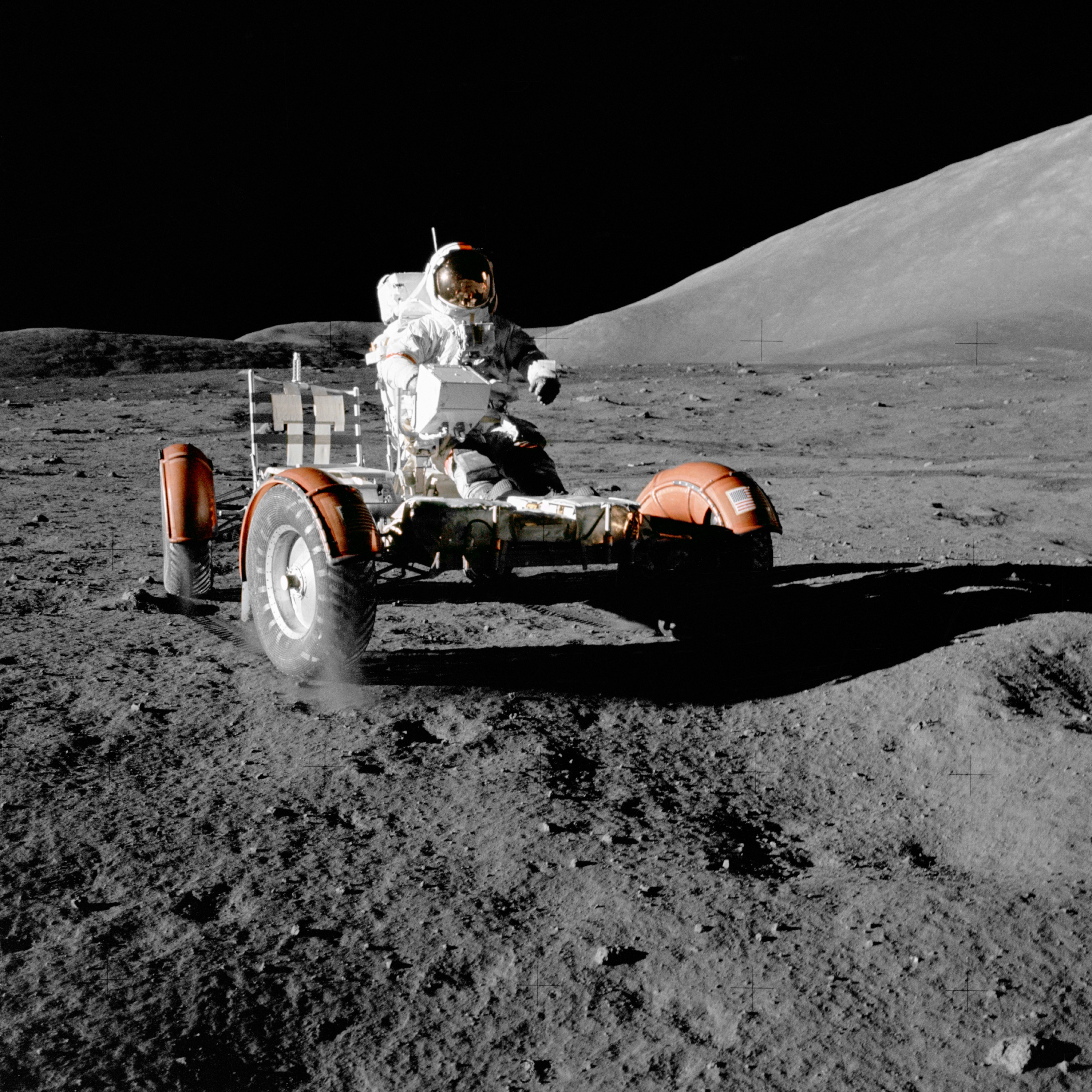Hello ladies and gents this is the Viking telling you that today we are talking about

Apollo 17 (December 7–19, 1972) was the final Moon landing mission of NASA's Apollo program, and remains the most recent time humans have travelled beyond low Earth orbit. Its crew consisted of Commander Eugene Cernan, Lunar Module Pilot Harrison Schmitt, and Command Module Pilot Ronald Evans, and it carried a biological experiment containing five mice. Launched at 12:33 a.m. Eastern Standard Time (EST) on December 7, 1972, Apollo 17 was a "J-type mission" that included three days on the lunar surface, extended scientific capability, and the use of the third Lunar Roving Vehicle (LRV).
Cernan and Schmitt landed in the Taurus–Littrow valley and completed three moonwalks, taking lunar samples and deploying scientific instruments. The landing site had been chosen to further the mission's main goals: to sample lunar highland material older than Mare Imbrium, and to investigate the possibility of relatively recent volcanic activity. Evans remained in lunar orbit in the command and service module (CSM), taking scientific measurements and photographs.
Cernan, Evans, Schmitt, and the mice returned to Earth on December 19.
Apollo 17 was the first mission to have no one on board who had been a test pilot; X-15 test pilot Joe Engle lost the lunar module pilot assignment to Schmitt, a geologist. The mission included the first night launch of a U.S. human spaceflight and the final crewed launch of a Saturn V rocket. It was also the final use of Apollo hardware for its original purpose (extra Apollo spacecraft were later used in the Skylab and Apollo–Soyuz programs).
The mission broke several crewed spaceflight records: the longest Moon landing, longest total extravehicular activities (moonwalks), largest lunar sample, longest time in lunar orbit, and, at 75, most lunar orbits.
And as always have a chilled day from the Viking
APOLLO 17

Apollo 17 (December 7–19, 1972) was the final Moon landing mission of NASA's Apollo program, and remains the most recent time humans have travelled beyond low Earth orbit. Its crew consisted of Commander Eugene Cernan, Lunar Module Pilot Harrison Schmitt, and Command Module Pilot Ronald Evans, and it carried a biological experiment containing five mice. Launched at 12:33 a.m. Eastern Standard Time (EST) on December 7, 1972, Apollo 17 was a "J-type mission" that included three days on the lunar surface, extended scientific capability, and the use of the third Lunar Roving Vehicle (LRV).
Cernan and Schmitt landed in the Taurus–Littrow valley and completed three moonwalks, taking lunar samples and deploying scientific instruments. The landing site had been chosen to further the mission's main goals: to sample lunar highland material older than Mare Imbrium, and to investigate the possibility of relatively recent volcanic activity. Evans remained in lunar orbit in the command and service module (CSM), taking scientific measurements and photographs.
Cernan, Evans, Schmitt, and the mice returned to Earth on December 19.
Apollo 17 was the first mission to have no one on board who had been a test pilot; X-15 test pilot Joe Engle lost the lunar module pilot assignment to Schmitt, a geologist. The mission included the first night launch of a U.S. human spaceflight and the final crewed launch of a Saturn V rocket. It was also the final use of Apollo hardware for its original purpose (extra Apollo spacecraft were later used in the Skylab and Apollo–Soyuz programs).
The mission broke several crewed spaceflight records: the longest Moon landing, longest total extravehicular activities (moonwalks), largest lunar sample, longest time in lunar orbit, and, at 75, most lunar orbits.
And as always have a chilled day from the Viking
Comments
Post a Comment